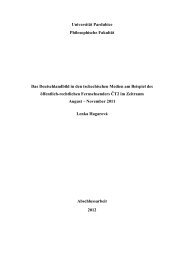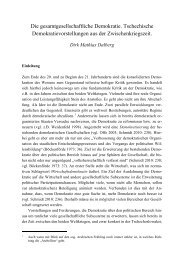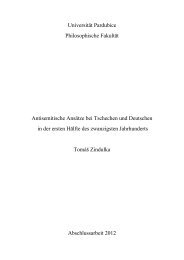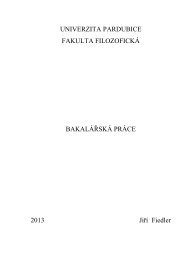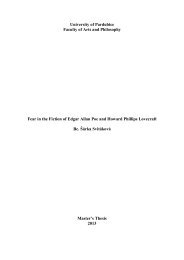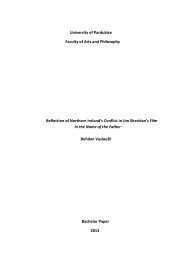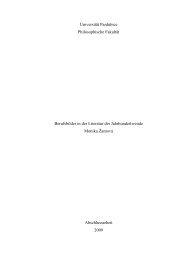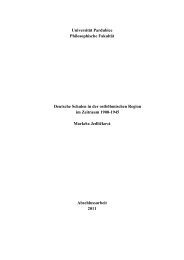University of Pardubice Jan Perner Transport Faculty Transport and ...
University of Pardubice Jan Perner Transport Faculty Transport and ...
University of Pardubice Jan Perner Transport Faculty Transport and ...
You also want an ePaper? Increase the reach of your titles
YUMPU automatically turns print PDFs into web optimized ePapers that Google loves.
educe the distance between destinations), or improved mobility substitutes such as<br />
telecommunications or delivery services. 44<br />
Providing access for an ageing population: The ECE population above 64 years <strong>of</strong> age has<br />
increased by about 20 million over the last two decades. Providing access for individuals with<br />
special needs: 3% <strong>of</strong> the world’s population are severely <strong>and</strong> about 12 % moderately disabled.<br />
Efficient international transport links <strong>and</strong> border crossings:<br />
Participation in global supply chains International transport by value dominated by sea: Special<br />
attention to l<strong>and</strong>-locked countries. Road transport is the most dominant mode <strong>of</strong> motorized<br />
transport in Africa, accounting for 80 per cent <strong>of</strong> the goods traffic <strong>and</strong> 90 per cent <strong>of</strong> the<br />
passenger traffic on the continent. African countries together have about 2.06 million km <strong>of</strong> roads<br />
in 2001, resulting in a road density <strong>of</strong> 6.84 km per 100sq.km. Whereas the average road-to-<br />
population ratio for the whole continent is 26 km per 10,000 inhabitants, there is a large sub<br />
regional variation.<br />
Central Africa <strong>and</strong> Southern Africa have the highest road distribution, with 49.5 km <strong>and</strong> 56.3 km,<br />
respectively, for every 10,000 population. In 2005, only 580,066 km or 22.7 per cent <strong>of</strong> the total<br />
African road network was paved. 45 Most African countries face huge costs associated with<br />
transportation. In accessing foreign markets, on average, Africa’s transport <strong>and</strong> insurance costs<br />
represent 30 per cent <strong>of</strong> the total value <strong>of</strong> exports, which compares unfavourably with 8.6 per<br />
cent for all developing countries. Although most share the problem <strong>of</strong> high transport costs,<br />
l<strong>and</strong>locked countries face the most excessive transport costs recorded on the continent.<br />
44 Critical issues in transportation [online]. 2009 [cit.2012.05.18]. Found from:<br />
http://www.trb.org/Publications/PubsCriticalIssuesin<strong>Transport</strong>ation.aspx<br />
45 The transport sector in Africa [online].2009.10 [cit.2012.05.19]. Found from:<br />
http://www.un.org/esa/dsd/csd/csd_pdfs/csd-18/rims/AfricanReviewReport-on-<strong>Transport</strong>Summary.pdf<br />
- 38 -



